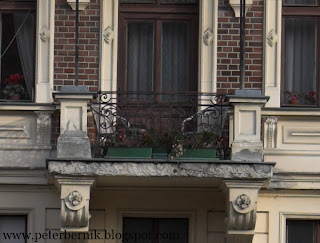Vignetting is visible at f2.8 (photos of the sky etc), otherwise it's well controlled. Bokeh is also good (for this focal range and aperture size) as well as contrast and colours.
As I mentioned before it has a very fast and almost silent USM drive (ring type), including full-time manual focusing (FTM). Front element does not rotate during focusing (it has internal focusing), so polarising filter can be used easily. Filter size is 77 mm.
By using IS you can gain 3 f stops (at cost of slower shutter speeds) it works for static objects. I managed to gain 4 stops, but this is very relative since it depends on many factors - the way you hold the camera, if you have shaky hands it doesn't help and at the end the proper breathing technique can help you achieve slower shutter speed (greater f stop gain). It has no 2nd mode for panning. There's no need for shutting down IS when the camera is on a tripod (it detects the lack of motion).

Built quality is good, but for the price you pay it could be better. Since it's not an L class lens it doesn't have magnesium alloy body and it's not protected against dust and humidity. It doesn't even come with a hood lens. I really think Canon do better for the price you pay.
Here are the samples, all the images are taken with Canon 350D, except for the last one, which is taken with 400D. The next post that is going to be posted by the end of this week (17-55 vs 50 1.8) all the images were captured with Canon 400D. IS was turned off, unless written otherwise.
17 mm, f2.8-8, center and border crops


f2.8, 1/1000, 17 mm, ISO 100


f4, 1/500, 17 mm, ISO 100


f5.6, 1/250, 17 mm, ISO 100


f8, 1/125, 17 mm, ISO 100

28 mm, f2.8-8, center and border crops


f2.8, 1/100, 28 mm, ISO 100


f4, 1/500, 28 mm, ISO 100


f5.6, 1/320, 28 mm, ISO 100


f8, 1/160, 28 mm, ISO 100

55 mm, f2.8-8, center and border crops


f2.8, 1/1000, 55 mm, ISO 100


f4, 1/640, 55 mm, ISO 100


f5.6, 1/320, 55 mm, ISO 100


f8, 1/125, 55 mm, ISO 100


IS test: f11, 1/8, 55 mm, ISO 100

Bokeh: f2.8, 1/800, 55 mm,ISO 100

Below are a few portraits, you can check the shaprness on the crops. It's not as good as on longer distances, but still adequate. You can check bokeh on this shots as well.

f2.8, 1/200, 52 mm,ISO 100, IS on


f2.8, 1/200, 52 mm,ISO 100, IS on


f2.8, 1/60, 51 mm, ISO 200, IS on, flash bounced of the ceiling

f3.5, 1/200, 53 mm, ISO 200, IS on

f2.8, 1/60, 55 mm, ISO 800, IS on, postprocessed

Pros:
-sharpness throughout the focal and aperture range
-very fast and almost silent AF
-colour&contrast
-IS performance
Cons:
-built quality could be better regarding the high price tag
-vignetting at f2.8
